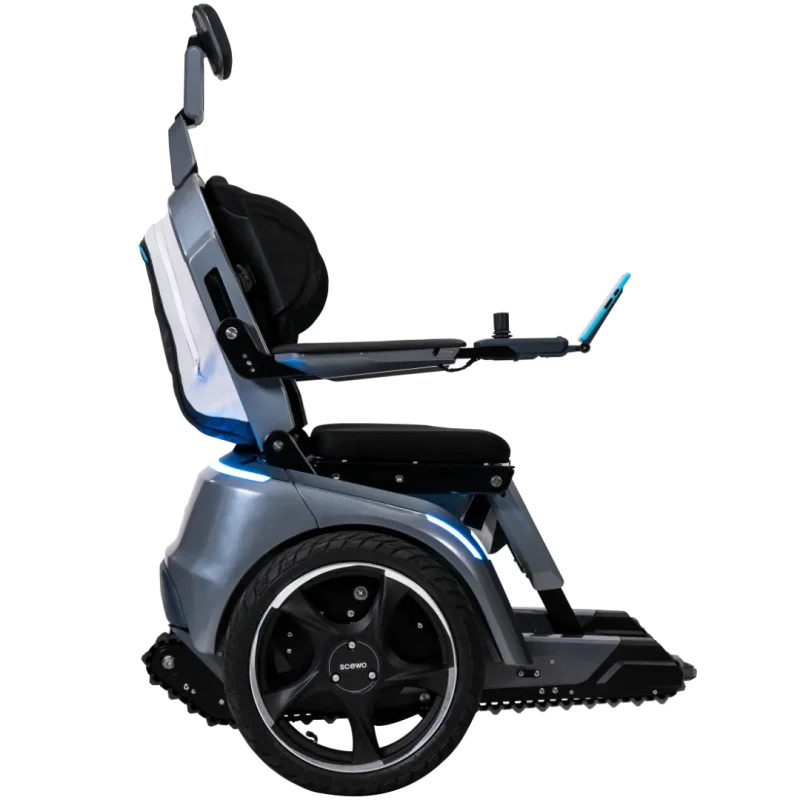The BRO wheelchair is meant to provide the function of an electric wheelchair, in which the user is able to move around in society in accordance with their needs and disability. In addition to this ground-level function, the BRO also has technology that allows for users to climb curbsides, sets of stairs, and navigation on uneven terrain.

The ability for a wheelchair to climb a set of stairs, curbs, etc. is certainly an adaptation that comes from the viewpoint of a functional solutions model in the sense that this assistive technology is made to address the fact that often our environments are simply inaccessible to people with disabilities, rather than those with disabilities needing to adapt or be “fixed” as posed by the medical model. Wheelchairs in themselves are an assistive technology that is meant to allow people with disabilities to maneuver their day-to-day lives according to their needs, rather than make some sort of medical adaptation to then be able to function in a society that is built for those without disabilities. What makes the BRO a functional solutions model AT is that its ability to climb stairs, curbs, move on rough terrain, be controlled through an app, and learn through environmental sensors is the use of technology to then eliminate limitations put upon the disabled community – in this case what is often wheelchair inaccessible spaces, hidden entryways/ ramps, or accessibility features that are not actually accessible (such as steep ramps). In terms of accessibility, usability, desirability, and utility, this piece of technology can rank pretty high in that it gives people with disabilities the ability to then access these non accessible spaces. When it comes to aspects such as affordability, viability, and compatibility there are some issues to note. The estimated cost of the BRO wheelchair starts at around $38,000, its control is reliant on phone technology that may not be accessible to all socioeconomic classes, and the reliability of self-adapting behavior of the wheelchair through the use of sensors can lead to the chair adapting for itself rather than the person that is using it.



It is important to note as well that there have been points made by those in the disability community/ disability advocates that this creation of a big, technologically advanced, and “accessibility-providing” wheelchair then takes away from the main focus that needs to be put into place, which is continuing to create environments that are accessible to all people, instead of expecting those with disabilities to adapt to our current landscapes. Not everyone can afford a $38,000 wheelchair, and some simply just do not want a piece of assistive technology that has so many features due to personal preference – it should then be made possible for the world to still be accessible to these people with disabilities just as much as it is made accessible to those using the BRO and the features that it provides. It is difficult because the creation of this technology can be a preference of some people that use wheelchairs, and it can also help create accessible spaces where there currently is no accessibility and there may not be able to be changes made to the environment for some time. But as with many assistive technologies, the caution does need to be taken to not become dependent on these inventions with the expectation that everyone can afford them and want to use them. This is why it is so important, as we have discussed in class, to look at accessibility models often in conjunction with one another, and continue to conversate around the creation of all sorts of new assistive technologies as we move forward in the 21st century.
